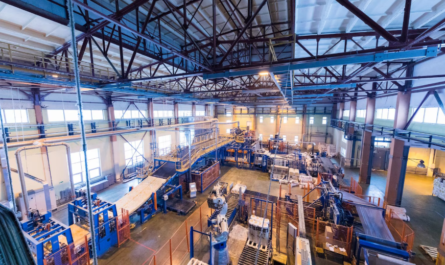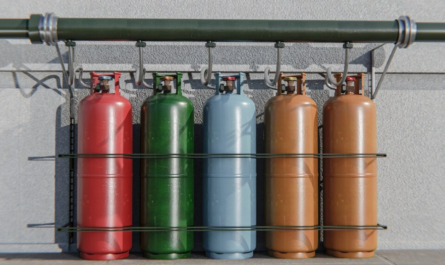Introduction
Electrical equipment is the lifeline of any modern factory. From massive motors to small control panels, each component plays a crucial role in keeping production seamless and efficient. But here’s the catch: where you place this equipment is just as important as the equipment itself.
A poorly located electrical panel can become a fire hazard. A control box placed in a humid area could lead to costly downtime. In short, the location of electrical equipment in a factory is not just about convenience — it’s about safety, compliance, and long-term productivity.
In this blog post, we’ll break down everything you need to know about placing electrical equipment in a factory, including regulatory standards, real-world tips, common mistakes, and how to avoid them — all written in a friendly, easy-to-understand tone.
🚧 Why Equipment Location Matters More Than You Think
Let’s begin with a simple question: Would you keep a high-voltage panel next to a water tank?
Hopefully, your answer is a loud and clear “No!”
Locating electrical equipment correctly ensures:
- ✅ Worker Safety: Minimizes risk of electrocution or arc flashes.
- ✅ Equipment Longevity: Reduces exposure to environmental stress.
- ✅ Compliance: Helps meet legal obligations under safety standards.
- ✅ Operational Efficiency: Easy maintenance and less downtime.
⚖️ Regulatory Framework: What Do the Standards Say?
Before we dive into practical tips, let’s look at what laws and standards have to say.
1. Indian Standards (IS) and IEC Guidelines
- IS 732 (Code of Practice for Electrical Wiring Installations)
- IEC 60364 (Low-voltage electrical installations)
- IS 5578 & IS 11353 for identification of conductors and equipment
These standards suggest clearances, height, labeling, accessibility, and environmental considerations.
2. Factories Act, 1948 (India)
Section 17 and Section 87 touch upon safe working conditions and potentially hazardous processes.
3. National Electrical Code (NEC)
While NEC is a U.S. standard, many multinational factories adopt its safety practices globally. It insists on:
- Minimum clearances (typically 3 feet or 900 mm).
- Adequate working space around live parts.
- Protection from moisture, heat, flammable materials.
📍 Key Considerations for Locating Electrical Equipment
Let’s get to the crux: Where should electrical panels, control units, transformers, and cables be placed?
1. Accessibility is Non-Negotiable
Golden Rule: If a worker can’t access it quickly in an emergency, it’s in the wrong place.
- Keep panels and MCCs at eye level (approx. 1.5 meters).
- Avoid blocking them with storage racks or machinery.
- Label every panel clearly. Labels must not fade or peel off.
Tip: Use glow-in-the-dark markers for nighttime visibility.
2. Dry, Dust-Free Locations are Ideal
Moisture and dust are the sworn enemies of electrical components.
- Avoid placing panels in basements, washrooms, or near drains.
- If unavoidable, use weatherproof or IP65-rated enclosures.
- Install exhaust fans or ventilation louvers in dusty environments.
Did you know? Dust buildup can act as an insulator, causing components to overheat and eventually fail.
3. Keep Away from Heat Sources
Heat accelerates wear and tear of insulation and circuitry.
- Stay at least 1 meter away from boilers, furnaces, or compressors.
- Consider thermal shielding or insulation barriers if proximity is unavoidable.
- Install temperature sensors inside large panels.
4. Maintain Safe Clearance Zones
Always leave space around equipment for safe operation and maintenance.
According to NEC:
- Minimum 3 feet (900 mm) in front of electrical panels.
- Side clearance of at least 30 inches (750 mm).
- Height clearance of at least 6.5 feet (2 meters).
Use yellow floor markings to define these zones.
5. Protect from Physical Damage
Accidental knocks from forklifts or moving equipment can be disastrous.
- Mount panels on raised platforms or guard rails.
- For outdoor equipment, install barriers or fencing.
- Use industrial-grade enclosures in high-traffic zones.
6. Consider Environmental Zones in Layout Planning
Different zones in a factory require different protective measures:
- Wet Areas (like wash sections): Use waterproof enclosures and elevated mounts.
- Hazardous Zones (paint booths, gas filling): Use explosion-proof (Ex-rated) gear.
- High Noise Areas: Use remote monitoring to avoid sending personnel frequently.
7. Emergency Exits and Escape Routes Must Remain Clear
Never install electrical equipment on or near emergency exit routes.
- This is both a code violation and a potential death trap.
- Always ensure unobstructed paths to and from panels.
🔌 Placement Tips for Common Electrical Equipment
a) Main Distribution Panels (MDP)
- Centralized but away from production floor.
- Secure room with controlled access.
- Fireproof walls (minimum 2-hour rating recommended).
b) Motor Control Centers (MCCs)
- Close to motor loads to minimize cable length.
- Keep on dry, level surface with vibration pads.
- Use color-coded cabling for easy troubleshooting.
c) Transformers
- Outdoors or in a well-ventilated, isolated room.
- Oil-cooled types should have a catchment pit.
- Maintain minimum 3 m distance from walls or structures.
d) UPS and Battery Banks
- Air-conditioned, dust-free room.
- Acid-resistant flooring.
- Use acid spill kits and ventilation fans.
🛑 Common Mistakes to Avoid
- Blocking Panels with Storage A maintenance guy once had to climb over cartons to shut off power. Not cool.
- Improper Labeling Panel A or Panel 1 is not enough. Use clear IDs like “Main LT Panel – Assembly Line 1”.
- No Earthing Provision Skipping earth pits near new panels is a dangerous shortcut.
- Installing Near Chemical Storage Flammable vapors + sparks = disaster waiting to happen.
- Poor Lighting Panels must be well-lit, especially during night shifts or emergencies.
🧯 Safety Integration: Fire & Electrical Go Hand-in-Hand
- Place fire extinguishers (CO₂ or DCP types) near panels.
- Install smoke detectors in electrical rooms.
- Include arc flash protection gear for high-voltage areas.
📊 Planning Layouts: Start with a Safety Mindset
When planning factory layouts:
- Involve both electrical engineers and safety officers.
- Use AutoCAD or 3D modeling software to simulate layout and workflow.
- Conduct a HAZOP or JSA (Job Safety Analysis) for critical zones.
👷 Training and Signage: The Last Mile of Safety
No matter how well you plan the layout, safety ultimately comes down to awareness.
- Train all staff on panel locations and emergency cut-offs.
- Use visual indicators like red/green lights for panel status.
- Display “DO NOT BLOCK”, “AUTHORIZED PERSONNEL ONLY”, and “HIGH VOLTAGE” signs.
📝 Final Thoughts
The location of electrical equipment in a factory is more than a matter of design — it’s a commitment to safety, compliance, and smart operations. Whether you’re setting up a new plant or revamping an old one, prioritizing correct placement will save you from costly shutdowns, legal headaches, and even life-threatening accidents.
So the next time someone says, “Let’s just put this control panel here,” take a step back and ask — is it safe, legal, and efficient?
If not, you now know exactly what to do.
Like this article?
📌 Bookmark it, ✅ Share with your EHS team, and 💬 Comment your experience with factory electrical layout challenges!
Stay safe, stay smart. Until next time, power up with purpose! ⚡
🔁 Readers also enjoyed these blog posts:
- Safety Management’s Role: The Unsung Hero Behind Every Successful Organization
- Safety Management and Its Responsibilities: Protecting People, Preventing Hazards, and Promoting a Culture of Care
- Benchmarking for Safety Performance: A Key to Continuous Improvement
“Start Your Website Journey Today – Exclusive Hostinger Discounts!”

Turn Any Idea into Viral,
Jaw-Dropping AI Videos in Seconds!










